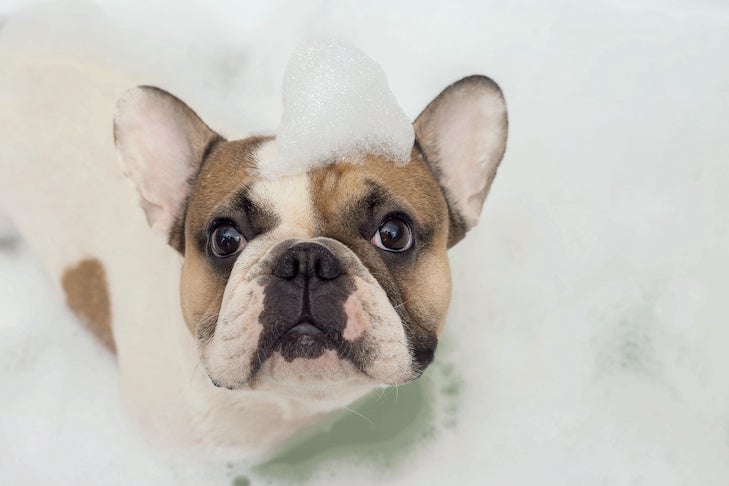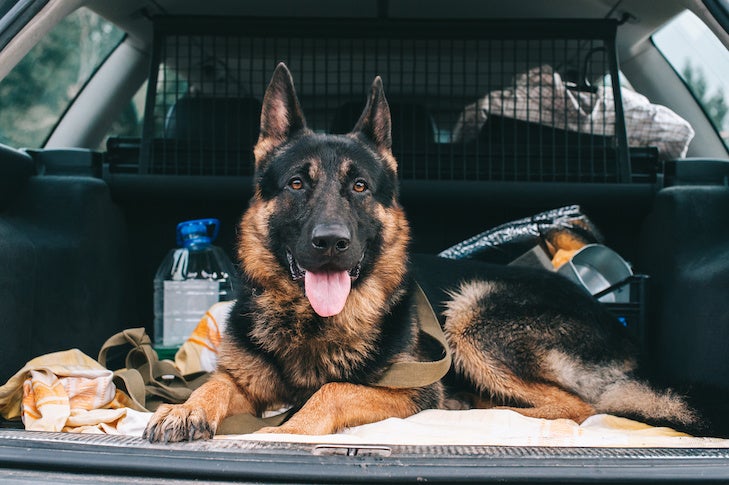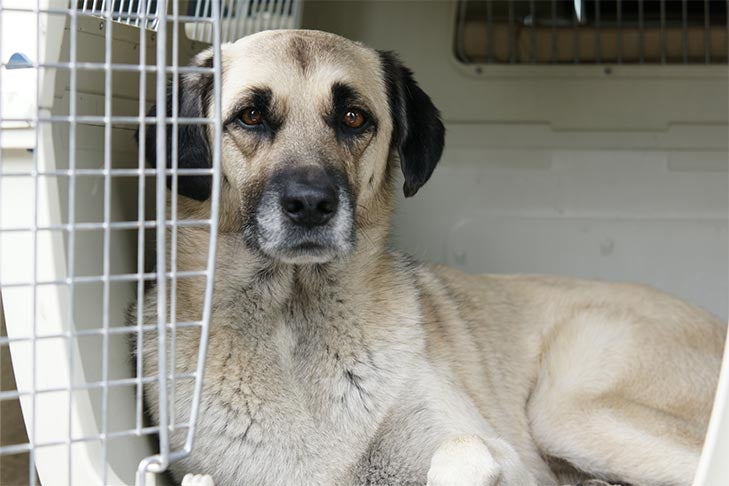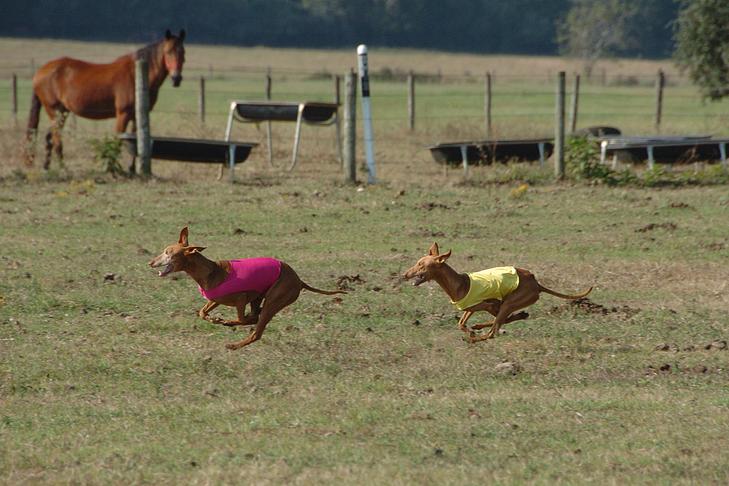
AKC is a participant in affiliate advertising programs designed to provide a means for sites to earn advertising fees by advertising and linking to akc.org. If you purchase a product through this article, we may receive a portion of the sale.
Owning a dog is a joy, privilege, and responsibility. If you are considering bringing a dog into your life, think seriously about the commitment that being a responsible dog owner entails.
The AKC is committed to protecting the health and well-being of all dogs. In honor of AKC’s Responsible Dog Ownership Day, on September 17th, here are 75 tips on how to be a good dog owner.
Prepare to Be a Responsible Dog Owner
1. Recognize the Commitment
Before deciding that a dog is right for you, make an honest assessment about whether you’re ready for a dog. Ask yourself if you are ready for the financial commitment, as well as the emotional and time commitments, that owning a dog requires.
2. Evaluate Your Lifestyle
Think about the type of dog that will best suit your lifestyle. Evaluate all aspects of your family’s lifestyle — hobbies, activities, personalities — before choosing a breed.
3. Make a List
Based on your evaluation, what qualities do you want in a dog? Consider size, energy level, grooming needs, trainability, and temperament. If you rent an apartment, are there restrictions on height, weight, or breed? Answer these questions now, because once you bring a dog home, it can be heartbreaking to realize you made the wrong choice.
4. Choose a Breed
Once you have made your list of ideal characteristics, do some research to find out which breeds fit that profile. Read up, attend dog shows, and visit the AKC’s breed pages.
5. Get Referrals to Responsible Breeders
You have a better chance of success if you get your dog from a responsible, ethical breeder. The AKC has a Breeder Referral contact for each recognized breed. They can put you in touch with breeders or rescue organizations in your area.
6. Contact Breeders
Reach out to dog breeders in your area. Don’t be discouraged if the first one you talk to doesn’t have puppies available right away. That person may know of another breeder in the region.

7. Ask Questions
When you find a breeder you’re comfortable with, ask to visit the kennel and view the dogs on the breeder’s premises. Don’t be afraid to ask questions about the breed and the breeder’s practices.
8. Consider an Older Dog
Puppies aren’t for everyone. If an older dog better fits your lifestyle, check the AKC Rescue Network. Most rescued dogs have already been spayed or neutered and are screened for health and temperament issues.
9. Expect Questions
A responsible breeder or rescue organization will ask you extensive questions about the type of home you can offer a dog. They are as committed as you are to making the right match.
10. Prepare to Wait For the Perfect Dog
Availability varies. Responsible breeders do not breed often, and many times, the puppies of a planned breeding are already spoken for. A good dog is worth waiting for.
11. Skip the Holidays
Most breeders don’t recommend giving dogs as a present. A new puppy needs your undivided attention, which is difficult during the holiday season. A better idea is to give dog-related gifts — toys, leashes, grooming tools — and then bring your puppy home when all of the excitement has died down.
Commit to Dog Ownership
12. Choose Your Dog
Listen to your breeder’s suggestions about which puppy in the litter is right for you. If you are bringing home an older dog, get input from the rescue organization.
13. Get It in Writing
Information about the sale or adoption should be in writing. The contract should include details about fees, spay-neuter agreements, health guarantees, terms of co-ownership, restrictions on breeding, and living arrangements. It should also include instructions on what to do if the dog, despite your best efforts, simply doesn’t work out for you or your family. Most responsible breeders will insist that the dog be returned to them.
14. Get Your Papers
You should receive an AKC registration application from your breeder when you purchase the puppy. Make sure the breeder completes the appropriate sections of the form and signs it. The breeder can also help you fill out your section correctly.
15. Register Your Dog
Send your completed application to the AKC. Your dog will then become part of the nation’s largest registry of purebred dogs. If you rescue a dog, consider applying for a Purebred Alternative Listing/Indefinite Listing Privilege (PAL/ILP) number. This allows your dog to participate in some performance events.

Get Ready to Bring Your New Dog Home
16. Buy the Necessities…and Toys.
Purchase food, treats, a collar and leash, toys, brushes and combs, and other things you’ll need in advance so that your dog or puppy’s transition into your home will be a smooth one.
17. Make a Schedule
You and your family members should decide who will be responsible for giving your dog food, water, walks, exercise, clean-up, and grooming. Post a schedule of tasks to remind everyone of their responsibilities.
18. Dog-Proof Your House
Prepare your home before your new dog arrives. Move breakable or “chewable” items to higher ground. Make electrical cords inaccessible to curious paws and noses. Block off any area of the house that’s off-limits. Block access to any house or garden plants that are toxic to dogs.
19. Set a Containment Policy
Make sure the yard is securely fenced or that you have a run for your dog. If that’s not possible, keep in mind that your pup will need to be on a leash outdoors.
20. Make a Bed
Create a comfortable area — whether a crate, a dog bed, or a pile of blankets — for your dog to go to when they need rest or privacy.
21. Select a Veterinarian
Choose a veterinarian ahead of time, so you’ll be ready for a visit soon after your dog comes home. Give your vet copies of the dog’s health records, and set up a vaccination and checkup schedule.

Bring Your Dog Home
22. Let Your Dog Adjust
Your new pet is bound to feel insecure and frightened by changes in their environment and may be homesick for their mother or littermates. Show them their crate or bed, and where to find food and water. Then leave them alone to explore their new surroundings.
23. Name Your Dog
Your breeder may have suggestions or even requirements for their AKC-registered name, but their call (or informal) name is up to you.
24. Make Introductions
Introduce your dog to your household slowly. Many pairs of hands petting them at once can be frightening. Later, introduce neighbors, regular visitors, and other family members.
25. Introduce Other Pets
Family pets should also be properly introduced to your new dog. Don’t expect them to get along right away. Give them time to adjust to one another.
26. Potty Train Your Pet
Whatever method of house training you choose, make sure everyone in the family enforces it consistently.
27. Set House Rules
Teach your dog from the beginning what is and is not appropriate behavior. If something is “OK” today, your puppy will think it’s OK forever. Make sure every member of the family is aware of the rules you’ve set. Consistency is key to being a responsible dog owner.

Keep Your Dog Healthy
28. Schedule Regular Checkups
Schedule regular checkups with your vet. The AKC provides 30 days of pet insurance coverage from AKC Pet Insurance for newly registered puppies. Details about this complimentary benefit will be sent to you shortly after registration.
29. Feed Your Dog a Healthy Diet
Your breeder or vet can suggest the food that is best for your dog’s age, size, and activity level. Keep the diet consistent. Always provide plenty of fresh, clean water.
30. Exercise
Make sure you’re giving your dog enough exercise for their health, age, breed, and size. If you’re unsure what type of exercise (and how much) is right for them, talk to your vet and breeder. There are many types of exercise for dogs. You can take your dog for walks, play games, run in the yard, play fetch, and so much more.
31. Vaccinate
Make sure your dog is up-to-date on their vaccinations. Keep a copy of their records handy.
32. Prevent Disease
Depending on where you live, your dog could be at risk for diseases like heartworm and Lyme disease. Ask your vet for tips on preventing these conditions.
33. Repel Fleas and Ticks
Keep your dog, their bedding, and your home free from parasites. Consult your vet about which flea and tick prevention method is right for your pet.
34. Know Your Dog’s Patterns
You will become familiar with your dog’s patterns of eating, drinking, sleeping, and relieving themselves. Any major variations in these patterns could indicate illness.
35. Bathe Your Dog
How often you should wash your dog will depend on different factors, including their breed and environment. When you do bathe them, make sure to use a shampoo specifically made for dogs. If you’re not sure which canine shampoo is the best option, you can ask your vet. You can also take your dog to a professional groomer.

36. Groom Your Dog
Some short-coated breeds need just a quick brushing every week, while some longer-coated breeds need daily brushing to prevent matting and manage shedding. Ask your vet and breeder about grooming techniques and recommended equipment for your breed.
37. Clip Those Nails
Learn how to clip your dog’s nails or ask the vet or groomer to do it.
38. Clean Those Teeth
To prevent tooth decay and gum disease, clean your dog’s teeth regularly. You can also give them hard biscuits, rope bones, or dental chews to help keep them clean.
39. Keep Your Dog Fit and Trim
Feed them a well-balanced diet and give them plenty of exercise. Learn how many treats you can safely give your dog. These methods can help prevent obesity.
40. Know the Breed’s Health Risks
You should be aware of common health problems in your dog’s breed, how to prevent them, and how to recognize their onset.
41. Be Alert to Changing Needs
As your dog ages, their needs will change. They may require a different diet, need more sleep, and be less active.
42. Know When to Let Go
If, due to illness or old age, your dog reaches a point where their quality of life is severely compromised, arrange to end their life humanely.

Keep Your Dog Safe
43. ID Your Dog
Wearing an ID tag with your name, address, and phone number at all times can help protect your pet.
44. Get Your Dog Microchipped
Dog microchips are a way to permanently identify your dog, and they can be invaluable in recovering a lost canine companion. Consider enrolling your dog in AKC Reunite, which is the nation’s largest database of microchipped pets.
45. Travel Safely
Keep your dog safe in the car by using a travel crate or seat belt harness.
46. Create a Disaster Plan
Have a disaster plan in place. Make an emergency kit, complete with clean water, food, and first-aid equipment. Find out in advance if evacuation shelters in your area allow animals.
47. Establish an Emergency Contact
Enlist a family member or friend, ideally someone your dog knows, to take care of them in case of illness, hospitalization, or other emergencies. Leave a list of general care instructions in a safe place.

Be Your Dog’s Friend
48. Play
Set aside time each day for play sessions. It’s fun, provides an outlet for your pup’s energy, and strengthens the bond between you.
49. Take Walks
Your dog will enjoy exploring the neighborhood. Plus, they’ll benefit from the exercise.
50. Talk to Your Dog
Your canine companion won’t understand your words, but they will enjoy the sound of your voice. You can also use different voice levels to praise or correct your dog’s behavior.
51. Give Treats
Your dog will always appreciate a treat, which also serves as an excellent training aid.
52. Switch Out Toys
Keep your dog entertained by rotating their toys. Put “old” toys out of sight for a month or two and then bring them back out again.
53. Plan Activities and Trips
Include your dog in family activities. Take them to the beach or park, or you can bring them special activities such as a dog parade. If you’re traveling to an event, check ahead for lodging that accepts dogs. If you’re flying with your pet, ask about travel accommodations for them when you make the reservation.
54. Give Them a Massage
Studies have shown that canine massages may be beneficial to your dog’s health and behavior.
55. Ease Separation Anxiety
Help your dog get used to being alone. Leave them each day with a minimum amount of fuss. When you come home, greet them calmly. This will teach them that your departure is not something to be concerned about.

Train Your Dog
56. Teach Basic Commands
Teach your dog basic commands such as sit, stay, come, and down. Training your dog makes your life easier, fulfills their desire to please you, and strengthens the human-canine bond.
57. Socialize Your Dog
Expose your dog to different people and settings regularly. Take them to the park, to the pet store, on a walk through town. Praise them for behaving calmly around strangers and other dogs.
58. Go to Class
Obedience classes can be a great experience for you and your dog. You may even discover that your dog has a talent for obedience, agility, or other dog sports.
59. Praise Your Pet
Praise your dog a lot for obeying commands and behaving well. Using positive reinforcement techniques will help your dog enjoy training.
60. Supervise Play With Kids
Children and dogs can be great friends, but they need supervision when playing together, no matter how friendly your canine companion might be.

61. Give Your Dog a Job
Teach them to fetch the paper or carry groceries. Giving your dog a sense of purpose and accomplishment can increase their well-being.
Breed Responsibly
62. Think Through Whether to Breed Your Dog
Talk to your vet and breeder about whether your dog might make a good candidate for breeding. Responsible breeders should consider a variety of issues, from genetic testing to responsibility for future puppies, before deciding whether to breed a dog.
63. Contain Bitches in Heat
Males can sense a female in heat up to five miles away. If your female dog goes into heat, keep her properly secured.
64. Do Health Screenings
If you plan to breed your dog, it is very important to test for health and disease. Perform all available tests to rule out the possibility of passing on a genetic defect.
Get Involved
65. Join an AKC Club
Many clubs offer educational seminars and health clinics. It’s also a good place to start if you plan to participate in competitive events with your dog.
66. Earn an AKC Title
Explore the world of dog sports by participating in AKC events. The AKC offers titles for accomplishments over a wide range of levels. Find an event that’s right for your dog and have fun.
67. Encourage Breed Behavior
Find activities that will encourage your dog to fulfill their breed’s purpose. The AKC offers many performance events geared toward specific breeds.

68. Involve the Kids
Your children can learn more about dogs and dog care by participating in AKC Junior Showmanship events. Through the National Junior Organization, your child can compete in conformation and performance events, attend seminars, and even earn scholarships.
69. Find a Mentor
If you plan to breed or show your dog, find an experienced person in the breed to show you the ropes. A mentor can make your “novice” days much easier.
70. Read All About It
Keep up with the latest dog news by reading AKC publications. From “The Complete Dog Book” to the AKC Gazette to numerous free publications, the AKC provides a wealth of materials on all areas of the dog world.
Be a Canine Ambassador
71. Set a Good Example
As a dog owner, you are responsible for your own dog’s well-being, and it’s important to set a good example. Owning a friendly, clean, well-mannered dog reflects positively on pets and owners alike.
72. Respect Your Neighbors
Not everyone will love your dog as much as you do. Keep your dog on your property. Don’t force your dog’s company on a neighbor who isn’t comfortable with dogs.
73. Fight Anti-Dog Legislation
Be a voice against legislation directed against specific breeds. For more information, contact the Government Relations and Public Education departments at the AKC.
74. Get a Canine Good Citizen Certificate
Your dog can become an AKC Canine Good Citizen by passing a test designed to demonstrate good manners and acceptable behavior in everyday situations. The CGC program has become a standard for recognizing obedient dogs and responsible dog owners throughout the country.
75. Show Your Pride
Bringing a well-behaved dog into public places or showing off their talents at competitive events is an excellent way to “advertise” the rewards of canine companionship.
While they are by no means exhaustive, these 75 steps will set you up to be a responsible dog owner.

